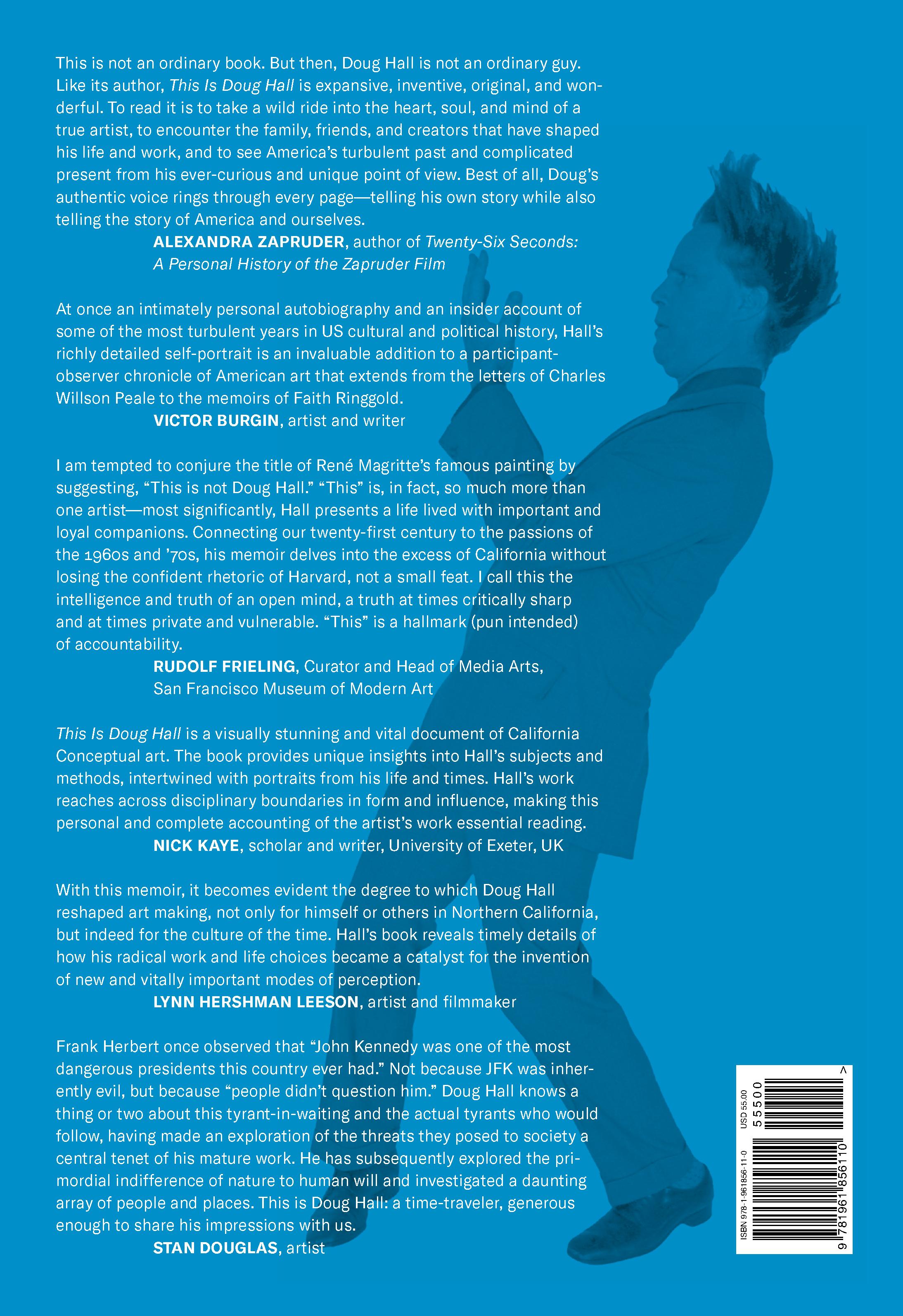
I Was Born Very Young and Had Everything to Look Forward To


I Was Born Very Young and Had Everything to Look Forward To
Those who accept the compulsion to become artists do so for reasons that can range from preternatural talent to existential need; that is, we become artists because we must, not because we want to. The overpowering necessity to make art can be more like an addiction or obsession than a rational aspiration. This is the story of my obsession, born of existential need, and the forces that led me to where I am today.
Rather than start at the beginning, I drop us into the main studio at the Rinehart School of Sculpture at the Maryland Institute College of Art where, in May 1969, I performed the Inner Space Simulation Module, the work I completed for my MFA degree. This event is pivotal in my imagination because it is where I began to think and speak as an artist. Later, I will fill in the blanks that brought me to this place and beyond.
“Ground Control to Hall. All looking good from our vantage point. We have thirty minutes until touchdown. All systems go. How you feeling?” I am listening to the voice of Sam Scott, a fellow graduate student, one of the eight flight controllers who have been on twenty-four-hour rotating shifts to make sure I remain safe during the seven-day performance. His voice reaches me through two speakers above the command console in front of me.
The Inner Space Simulation Module (ISSM) is an elaborate environment whose interior looks like a cross between Flash Gordon’s spaceship and a technological torture chamber a teenage sadist might have thrown together
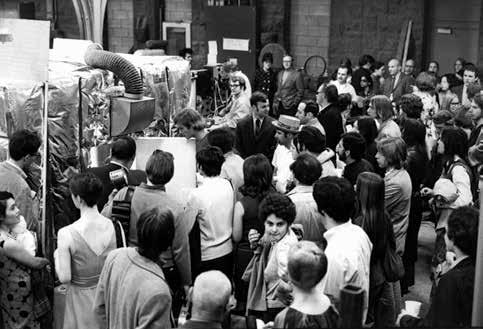
It was a muggy July day in 1966 when I arrived at the Rinehart School of Sculpture in Baltimore, manifesting more than a little Ivy League rigidity. A well-trimmed red beard and a very serious demeanor masked my burning desire to succeed in this new environment. I worked through the summer in the large open studio that was located at one end of the converted nineteenthcentury Mount Royal train station, replicating exercises I had done in William Reimann’s 3-D design classes at Harvard. There were only a couple of grad students around that summer, and they were surprisingly kind and helpful considering how undeveloped I was as an artist.
Coming from Harvard, art school was a revelation, an awakening, really. For better or worse, I arrived with a bit of an attitude—not about making, where I had much to learn, nor about thinking visually through the formal logic of materials. But though I had yet to prove it to myself, let alone anyone else, I was convinced that I could develop a visual language that addressed relevant, contemporary conditions rather than one that was purely aesthetic, limiting itself to formal issues. Somehow, I already knew that this language had to operate expansively and provocatively rather than complacently or predictably. I look back at this as my emerging intuition that the vocabulary of art could be wide ranging, not limited to static objects, or maybe not even to objects at all, and that, most crucially, it could be, must be, interrogative and experiential.
My acceptance into the MFA program on a provisional basis had been orchestrated by Bud Leake, president of the Maryland Institute College of Art, the governing institution that oversaw the graduate programs in sculpture at Rinehart and in painting at the Hoffberger School. The idea, which was put forth by Leake with, as I would later learn, gentle resistance from Rinehart Director Norman Carlberg—like Leake, a Yale grad—was that I would be on a three-year course to reach my MFA. The first year was to be a trial year during which I would take intermediate drawing classes, figure modeling in clay, and metal casting, as well as work on my own ideas. Recognizing that talking and thinking art required a next crucial step into materiality, I was determined to learn how to make stuff. When the fall semester began, I was moved from the studio in the converted train station to a small space on the top floor of a row house above a ceramics studio that I shared with two other provisional students, both of whom would drop out after their first year.
Toward the end of the semester, Leake and Carlberg decided, I imagine after consulting with my drawing teacher and figure modeling instructor, that I would benefit from moving back into a space in the Rinehart studio, which I did shor tly after returning from Christmas recess. Because the regular studios were full, they placed me in a windowless former storage room next to the bathroom in the hallway leading to Carlberg’s private studio. Not yet a full-fledged Rinehart Fellow, I was closer than I had been and now able to benefit from
Diane and I arrived in San Francisco in the fall of 1969, after crossing the country from Baltimore, our VW bus fighting westerly winds a good part of the time, which reduced our speed considerably on some of the desert highways. In the bed I had built into the van, at a spot overlooking the Snake River Canyon, we conceived our son, much to our surprise, who was born in March of the next year. Gannon—not a family name, but an amalgam of names we both liked—would become a central focus of our lives: adored, often pampered, and after he matured into manhood, my closest friend.
After repeated discussions in anticipation of leaving Baltimore, we determined that there could be a cultural and existential advantage to living on the western edge of North America, in a city that had avant-garde traditions dating to the Beat era and before, embodied in City Lights Bookstore, Lawrence Ferlinghetti’s monument to adventurous publishing, and of course, the hippie surge. The San Francisco music scene was pulsating with the incomparable Janis Joplin, Grace Slick, Country Joe and the Fish, It’s a Beautiful Day, and Tracy Nelson with Mother Earth; and there were venues like Bill Graham’s Fillmore West where, on occasion, we joined thousands of others in a community
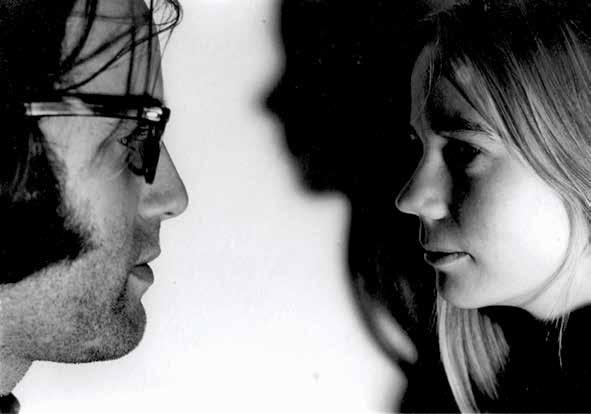
By 1978 my activities, both individually and as a member of T. R. Uthco, had attracted enough attention that I was invited to be a visiting artist for the spring semester in the Sculpture Department at Virginia Commonwealth University in Richmond. The invitation was in response to a couple of short visiting-ar tist stints I had done there at the behest of faculty member (and Fluxus artist) David E. Thompson (aka Davi Det Hompson). The first of these was when Jody and I were touring in 1974 with our performance Great Moments, and the second was a 1977 gig that involved a public lecture on my/our work followed by short critiques with individual students. I wasn’t an unknown to many of the students this time around: all upper-level undergraduates, they had elected to work with me based on the information that had been provided by the department or through their own research. Several had seen my talk the previous year.
To say I was nervous about this first major teaching job would be an understatement. It was softened, but also further complicated, by our decision to have Diane and eight-year-old Gannon make the trip east with me, which we did in our Dodge van. This was long before seat belts or booster seats for children, so Gannon bounced around in the back of the van as we plodded along through the late-December ice and snow. Resilient as he was, he approached the trip with a minimum of complaining. However, he had some difficult, tear-inducing moments adjusting to a new school where some of the children saw him as an outsider and thus a convenient target for bullying.
The situation wasn’t any easier for Diane, who abandoned the familiarity of her home and work routine to support me. She did it with as much love as she could muster, but not without moments of resentment and frustration that grew to the point that her leaving us for a couple of weeks to stay with a friend in New York was, we agreed, the best way to preserve our marriage.
It would be fair to say that my approach to this first teaching job was more instinctual than carefully worked out. Still, I came to the situation with a few precepts, if I can call them that. Some were based on my own experiences in college and fine arts graduate school, where I first encountered the rarefied language that was used in critiques.
My first precept, then as now, is not to emulate the undisciplined use of language that had been employed so uncritically in those seminars. As an art student, I had been appalled when an instructor would say things like, “I want to see more of you in the work,” or “This just doesn’t work,” or “What are you expressing?” or “I reject the beauty in your work,” or “Where is your anger?” Where, indeed. I considered art to be an exchange of ideas, a two-way conversation—the sensibility of the artist availing itself through the object or action and that of viewers through their interpretation of that object. Art is thinking made manifest through material: artists’ thinking flows into the things they
Jody, Diane, and I met members of Ant Farm, a collective of renegade architects and media artists, in 1969, shortly after we arrived in San Francisco. The introduction was through Hudson Marquez, a member of the group whom Diane knew from Tulane where they had both been undergraduate art majors. The other Ant Farmers were Doug Michels, a graduate of the Yale School of Architecture; Chip Lord, also a Tulane alumnus; and Curtis Schreier, who received his BA degree from the Rhode Island School of Design. It was a fortuitous meeting that led to deep friendships, particularly with Michels, who tragically died in 2003 from a fall while whale watching in Australia, and Lord, who has remained over the years a close friend, collaborator, and confidant.
It was in late 1975, on the second floor of our newly purchased house on Twenty-third Street, now our studio, where Jody and I, with Diane popping in and out, plotted with Chip and Doug our outlandish idea to reenact the Kennedy assassination in Dallas. By this time, Hudson had left Ant Farm to work with the pioneering video collective TVTV. Curtis, still an important member of Ant Farm, had little interest in our subversive assassination fantasies, although he helped modify the Lincoln convertible that would eventually carry the Artist-Presidential party through Dealey Plaza.

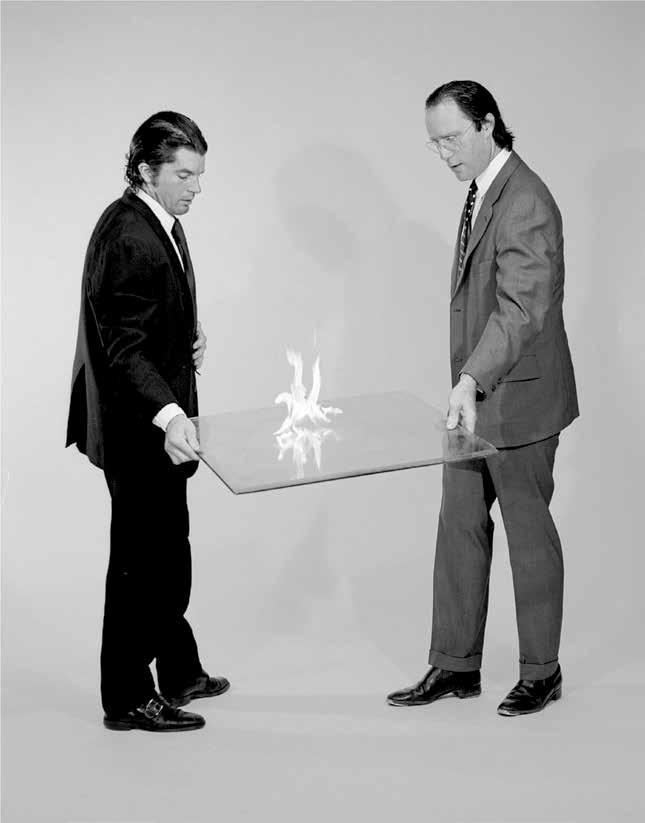

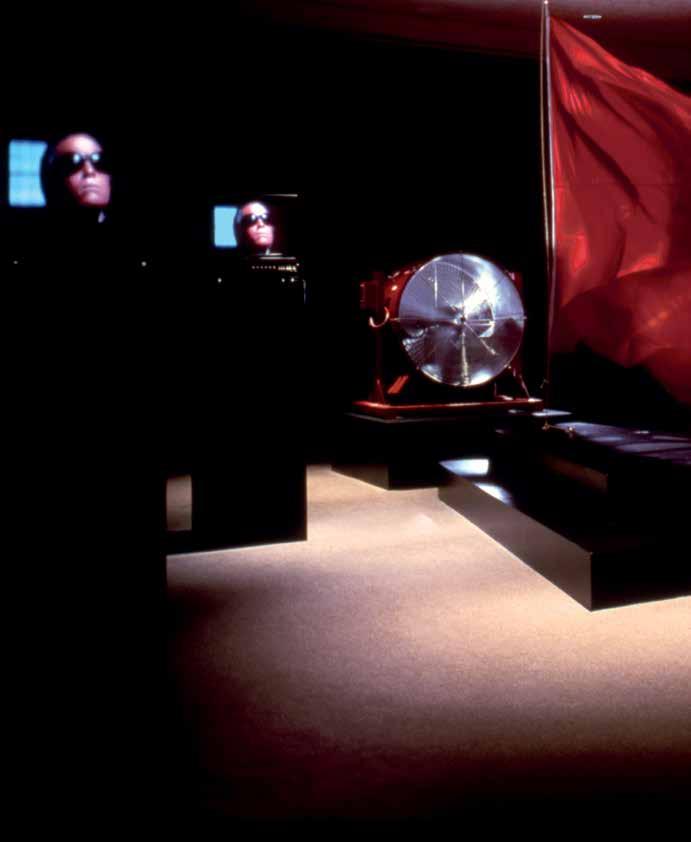


both words imply the idea of a stage. In the former, it is the stage upon which the central action occurs; in the latter, it is the stage from which the social drama of class and status is acted out and observed. From the eighteenth through nineteenth centuries, palci framed the dramas in which members of the new bourgeois elite performed their roles of social status. Wealthy individuals entered their boxes much as a prima donna might enter the stage and like her, each would look out from a lavishly draped and cushioned interior of bright silks and velvet, framed by an ornate arch. Along the sweeping wall of the opera house were arranged tiers of small individual stages, each one displaying its unique drama of gesture and expression, tableaux that signified one’s position within a dynamic social hierarchy. It was within these opera houses that two elites met: the ascending bourgeoisie and the descending aristocracy. The status of the former was based on the accumulation of wealth, drew its power from the marketplace, and was the future. The gentry based its privilege on heredity and was the past.
While this might explain how these buildings inscribed social hierarchies, it doesn’t account for the uncanny experience I had when making the photographs. On more than one occasion, the ornate spaces seemed to be staring back at me. I felt as if caught in the gaze from a source I couldn’t identify, and

that what I was photographing was not just a room, but the act of looking itself. On the surface, this is understandable: the center stage where I was standing (and where the viewer of the photographs is also positioned) is the optical and perspectival hub toward and from which all vision radiates. The result is that I, the photographer, and you, the viewer of the photograph, find ourselves at the center of the world at least as it is defined by this interior. With the empty seats and vacant tiers of boxes arrayed before us, we are aware of ourselves as both the ones seeing and the ones being seen. The sensation that I found unsettling, and had certainly not expected, was the impression of being caught in the act of looking. It reminds me of the embarrassment one might feel if caught while staring at someone, a stranger on the bus, perhaps, or at an adjoining table in a restaurant. My tentative explanation is that this being “caught-in-the-act” produces a self-consciousness that turns looking, a kind of objectless seeing, into watching—a looking that locates an object, almost possessing it, at the end of its gaze. My intuition tells me that there is something erotic, something primitive and biological, at the root of this sort of visual possession.




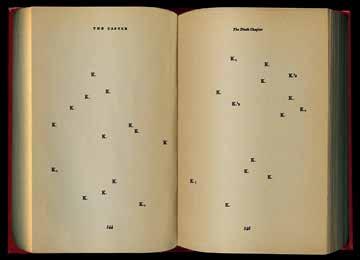
My final letter from Milena to Franz from Letters in the Dark reads: Dear Franz, I’ve tried to act, live, think, feel rightly, guided by my conscience; but somewhere there is a fault. I want to know whether I am the kind of person who has made you suffer the way you have suffered from every other woman, so that your sickness has grown worse, so that you have had to flee from me, too, in your fear, and so that I too must get out of your life—whether I am at fault or it is a consequence of your own nature. Answer if you can. I shall be so grateful and respect your wishes from here on in. If you grant me the simple, naked truth as you know it, this will provide me with a needed point of departure.



And Franz’s last letter to Milena:
Dear Milena,
I am so ashamed of my letters I scarcely dare open your replies. I keep trying to convey something that cannot be conveyed, to explain something that cannot be explained, something in my bones, which can only be experienced in these same bones. In essence it may be nothing more than that fear we have already discussed so often, but extended to everything, fear of the greatest things as well as the smallest, fear, convulsive fear of pronouncing a single word. On the other hand, maybe this fear isn’t simply fear, but also longing for something greater than anything that can inspire fear. Milena, only I am at fault because there was too little truth on my part, still far too little truth, still mostly lies, lies told out of fear of myself and fear of people. This pitcher was broken long before it went to the well. And now I’m keeping my mouth shut in order to stick with the truth a little. Lying is horrible, there’s no worse mental agony. Therefore, I beg you: let me be silent, now in my letters, in Vienna, in words.
